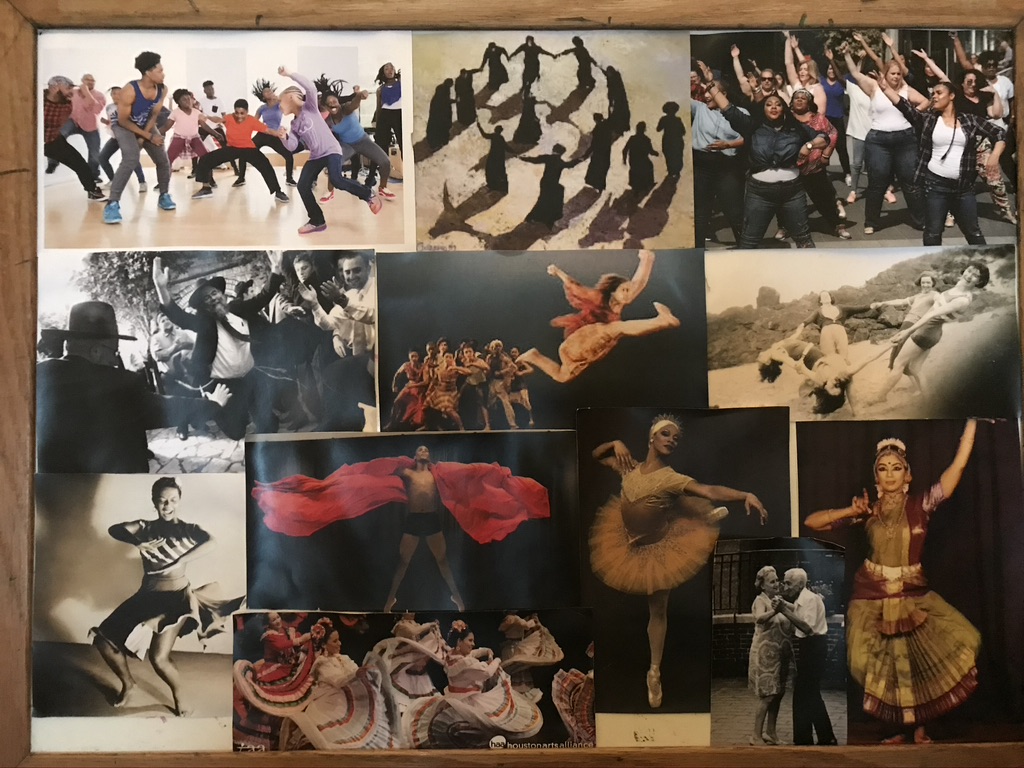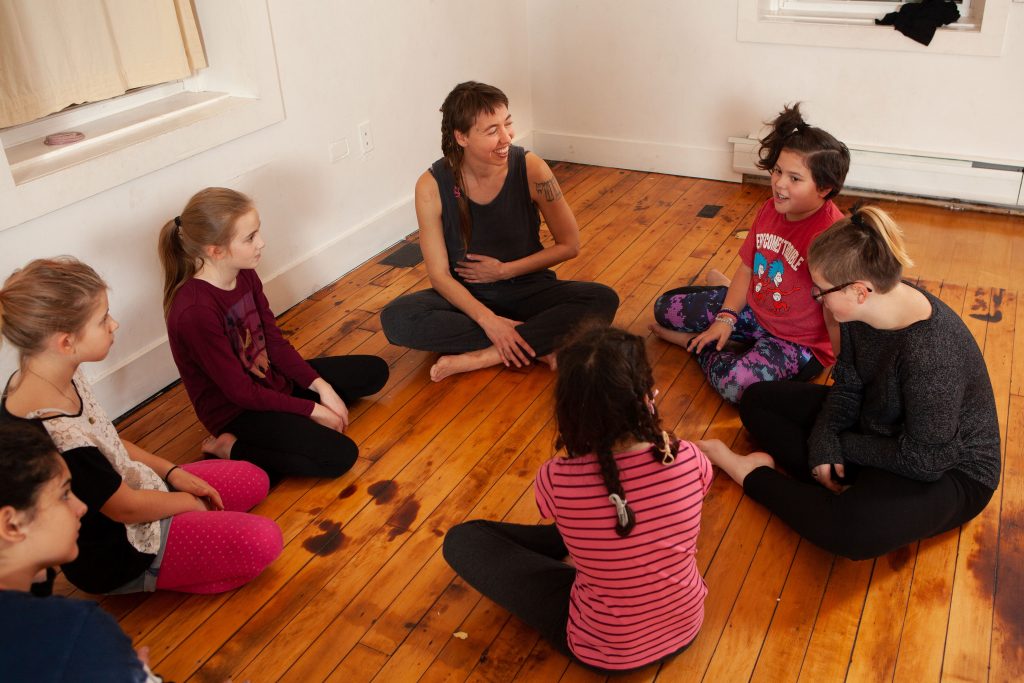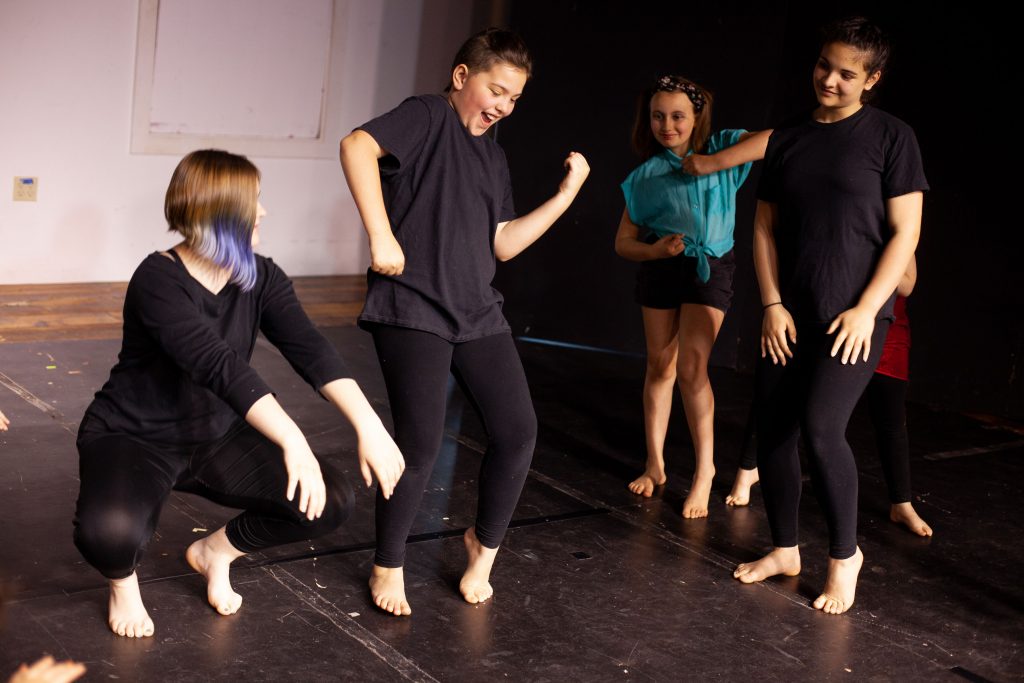Teaching Dance with Context;
Towards an Antiracist Dance Education
A Presentation of Research

Why is teaching dance in context integral to undoing racism in Dance Education? What does it look like to include context in dance classes with children? Is it possible to teach creative dance in context? And how might we need to re-imagine creative dance in order to work towards undoing racism in the dance classroom?
In the summer of 2020 I conducted a small research project with 21 dance educators to learn more about the antiracist teaching practice of teaching dance with context.
This research was informed by years of reflection about the dissonances between my life as a White creative dance teacher and my commitment to social justice. These reflections and questions lead me to the scholarship of dance educators such as Jesse Phillips-Fein, Crystal Davis, Nyama McCarthy Brown and Oyeja Banks. From there, this research project was born.
During this presentation, I will share some of the ideas and teaching methods for contextualizing dance with children (and really everyone!) that I have been so honored to learn about this past year. The presentation will be followed by a Q and A.

“The term Western dance, comprised of ballet and modern dance, separates these two forms from all other dance traditions, which are variously called ethnic dance, multicultural dance, and world dance. This terminology establishes the Whiteness of ballet and modern dance by presenting them as universal entities, without specific cultural and historical origins...All dance forms, including European ones, should be presented and examined as embedded in cultural and historical contexts…All dance forms, including European ones, should be presented and examined as embedded in cultural and historical contexts”.
Crystal Davis and Jesse Phillips-Fein, Tendus and Tenacy; Black Dancers and the White Landscape of Dance Education

Introducing Anna
Anna Hendricks is a dance educator, multi-disciplinary artist and justice-seeker living in Franklin County, MA. She is the founder of Great Falls Creative Movement, a dance education organization offering creative, inclusive and community-based dance programming in a studios, schools, nursing homes and community organizations throughout Franklin County, MA since 2009. Anna holds a BA in dance with a focus on interdisciplinary arts and education from Mount Holyoke College where she graduated in 2020 as a Frances Perkins Scholar. Anna is fed in all of her work by a long-term queer research and movement practice with Julia Handschuh and Lailye Weidman. She lives on a collective homestead with her partner, her 12 year-old and many animals and friends.

Teaching Philosophy
My teaching practice is based on the belief that all children can be creative dancers and all types of dance can be creative. I see the dance classroom as a place to practice relating to our whole selves, each other and the world beyond with care. It is a place to imagine the world we want to live and practice living in it together. My role as a teacher is to meet each student where they are; culturally, physically and emotionally. My dance classes build from the embodied knowledge and cultures of my students and the dance and movement experiences I have found most resonant in my own life. These include the over-the-top glitz, theatricality and musicality of ballet, the interdisciplinary work of the Urban Bush Women and the Bill T. Jones/Arnie Zane Dance Company, the community-engaged work of Liz Lerman and The Dance Exchange, improvisation as a social practice as learned through African-American social dance, queer contact improvisation, somatic-based mindfulness and dance therapy, culturally relevant creative dance pedagogy, Jenifer Monson’s iLANDing scores and an ongoing movement practice with Julia Handschuh and Lailye Weidman. In practice, my dance classes are social and personal, sacred and silly, rigorous and restful, cultural and culture-making, child-centered and community-minded, inclusive and constantly evolving.
Please be in touch!
I would love to be in continued conversation with other dance educators about dance pedagogy! You can learn more about my current teaching at www.greatfallscreativemovement.com or you can reach me at studio.movement@gmail.com
Graditude
I would like to extend my deepest gratitude to all of the people that contributed in so many ways to this research project. Thank you to all of the dance educators who participated as subjects in this research project! Thank you to professors Caroline Jackson Smith, Jodi Falk, Dasha Chapman, Lailye Weidman, Jenna Riegel, Lester Tome´ and Molly Christie Gonzalez. To my advisor for this project professor Barbie Diewald and the entire senior dance cohort at Mount Holyoke. To all of my students- past and present. And to my comrades, dancing partners, research buddies, my parents, my sister, my partner and my daughter.